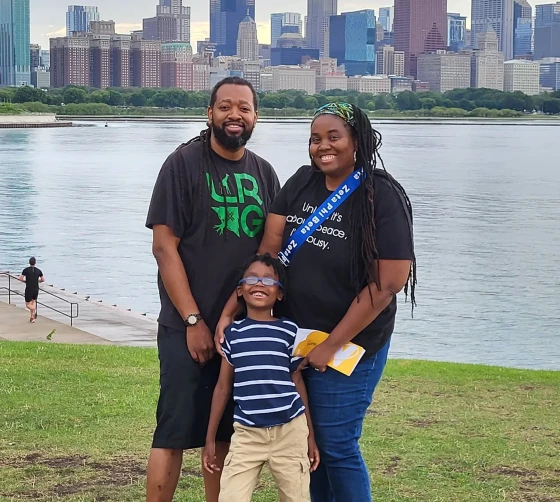Racial disparities in fertility care have persisted for years. Here’s why.
Share
Explore Our Galleries
Breaking News!
Today's news and culture by Black and other reporters in the Black and mainstream media.
Ways to Support ABHM?
By Randi Richardson, TODAY

At age 23, Regina Townsend was doing everything right: She’d graduated from college, gotten married and now it was time for her to have a baby, Townsend, now 41, recalled to TODAY.
At the time, she thought it’d be easy to get pregnant. In fact, she thought it was hard not to get pregnant by the way her family drilled it into her growing up.
“‘Whatever you do, don’t get pregnant. You need to go to college. You need to do well,'” family members would tell her as a teenager, she said. “But there was never a conversation about (fertility).”
That’s why Townsend was so surprised to learn she wasn’t able to conceive without fertility treatments.
“At 30-something, I’m thinking everything’s going to be fine. And I’m hearing, ‘Oh, you have fibroids. You have (endometriosis). Your egg quality isn’t great.’ It’s like, wait a minute. I didn’t know that I was even supposed to be concerned with all of this,” she told TODAY.
It took 10 years for her to be diagnosed with endometriosis, polycystic ovarian syndrome (PCOS), and completely blocked fallopian tubes, Townsend said. When she learned of the blockage, she and her husband decided to start in-vitro fertilization (IVF) treatments. They conceived son Judah, who is now 6.
Research shows that it’s common for Black women to start fertility treatment after experiencing infertility for multiple years, whereas their white counterparts usually seek care sooner — and Black women are often in their late 30s or early 40s when they start, older on average than white women. Michelle Obama started IVF when she was 37, and Tyra Banks, Kandi Burruss, Angela Bassett and Gabrielle Union started treatments when they were in their 40s.
Today has more details about the fertility struggles of Black women.
Shockingly, babies born after their Black mothers sought help with fertility have higher death rates than their white counterparts.









Comments Are Welcome
Note: We moderate submissions in order to create a space for meaningful dialogue, a space where museum visitors – adults and youth –– can exchange informed, thoughtful, and relevant comments that add value to our exhibits.
Racial slurs, personal attacks, obscenity, profanity, and SHOUTING do not meet the above standard. Such comments are posted in the exhibit Hateful Speech. Commercial promotions, impersonations, and incoherent comments likewise fail to meet our goals, so will not be posted. Submissions longer than 120 words will be shortened.
See our full Comments Policy here.